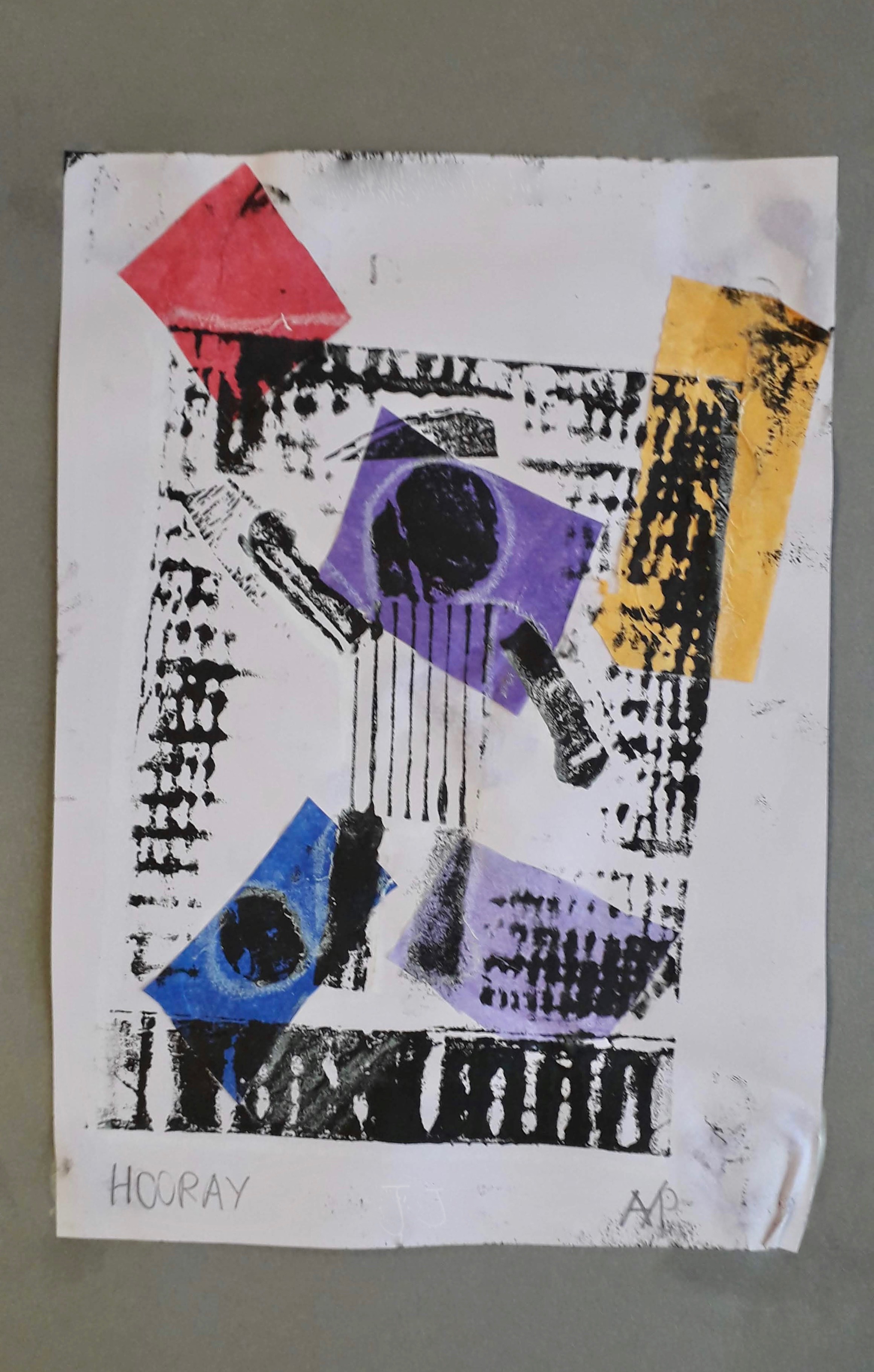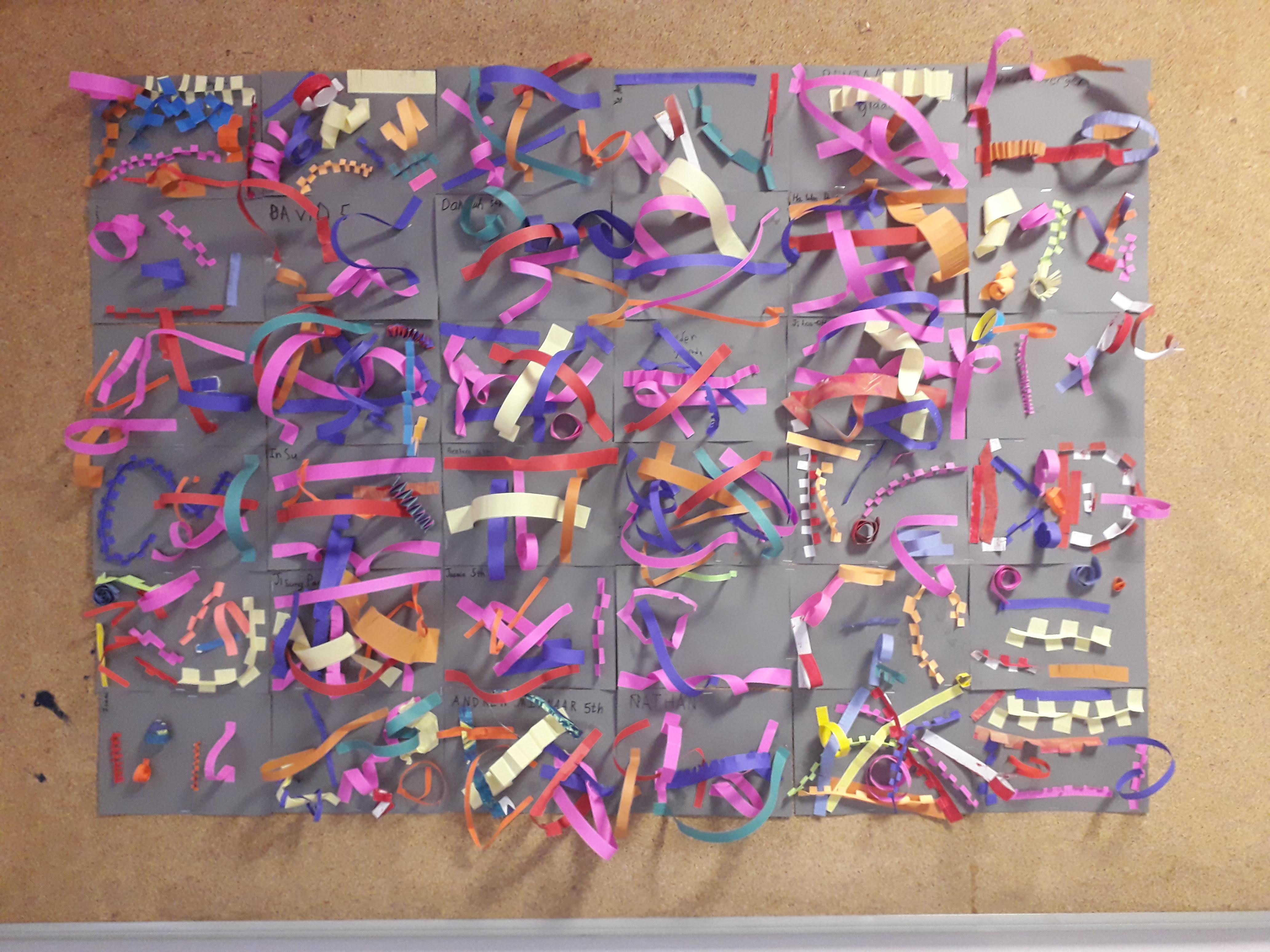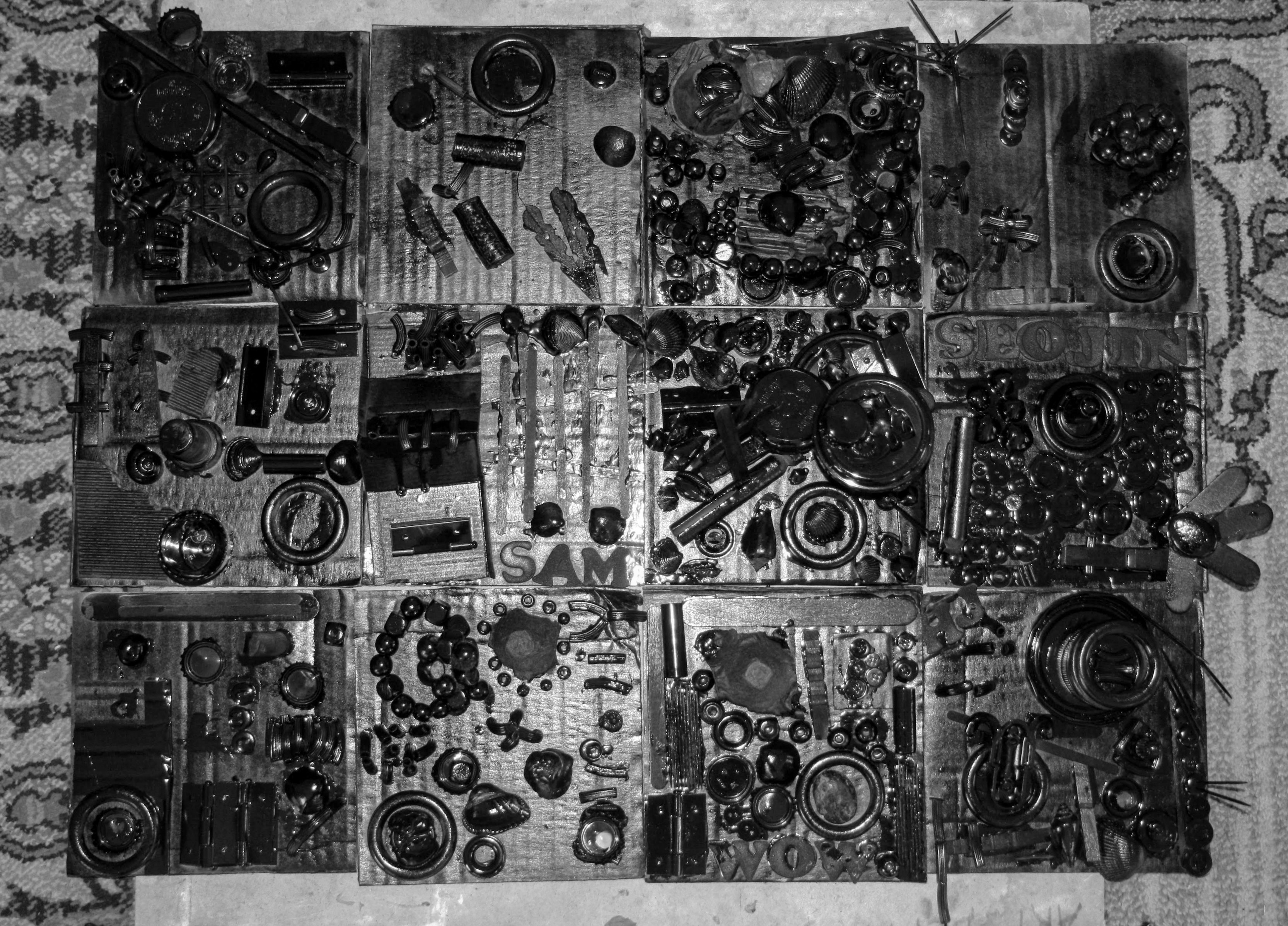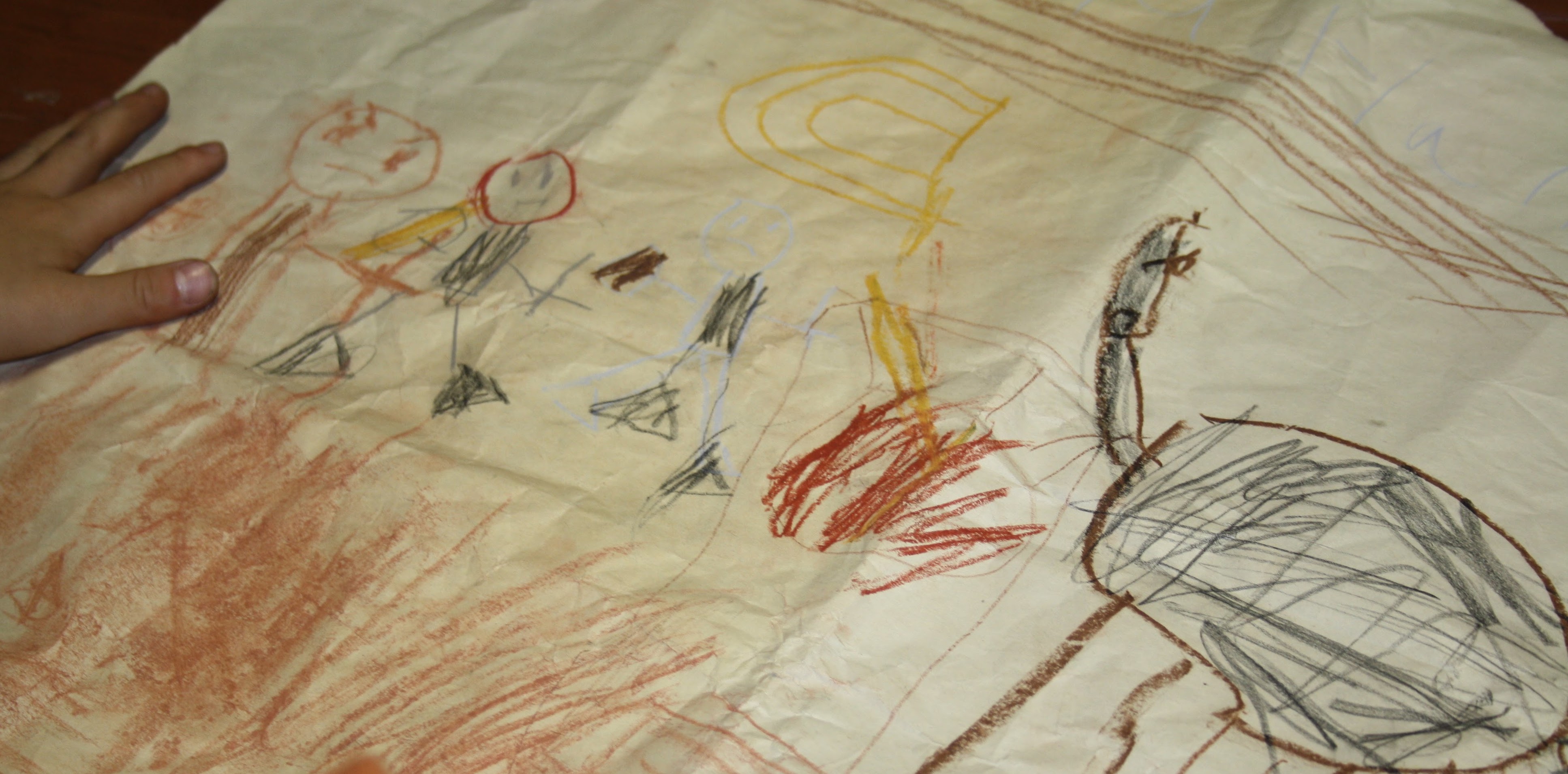Whew, it has been a busy month! I have enjoyed revisiting these lessons from a few years ago, having made some improvements (check back here, here and here for the original posts).
5th and 6th Grade: Gelli Monoprints
To make these, we first printed a layer of texture on the gelli plates, followed by a second layer using a stencil each student made.
7th Grade: Collographs

Students made collograph plates by gluing textured materials: cardboard, felt, wallpaper, string to a cardboard surface. Students printed an edition of three prints, plus two artist proofs: one in an additional different colour, and one incorporating chine collé (tissue paper that gets glued to the paper at the same time as printing.
Once they finished printing, students covered their collograph plates with tinfoil to create a repoussee of the textures present. Colour and detail was added overtop with sharpie markers.
8th Grade: Styrofoam Relief Prints
The students created these prints by carving lines into styrofoam using a dull pencil. An edition of 3 prints were made, in addition to two artist proofs: one incorporating chine collé and one reduction print with two colours. The reduction prints were made by printing a first layer in one colour, drawing additional detail and line work on the plate and printing again overtop of the first layer in a second colour.
And, amidst all the flurry of printing with 70+ middle schoolers, I decided to host another after school workshop for my fellow teachers!
















































 A new unit was added to the kindergarten curriculum this year, as I found out they were studying the ocean in science! Following our exploration of dots and colour mixing (inspired by
A new unit was added to the kindergarten curriculum this year, as I found out they were studying the ocean in science! Following our exploration of dots and colour mixing (inspired by 






